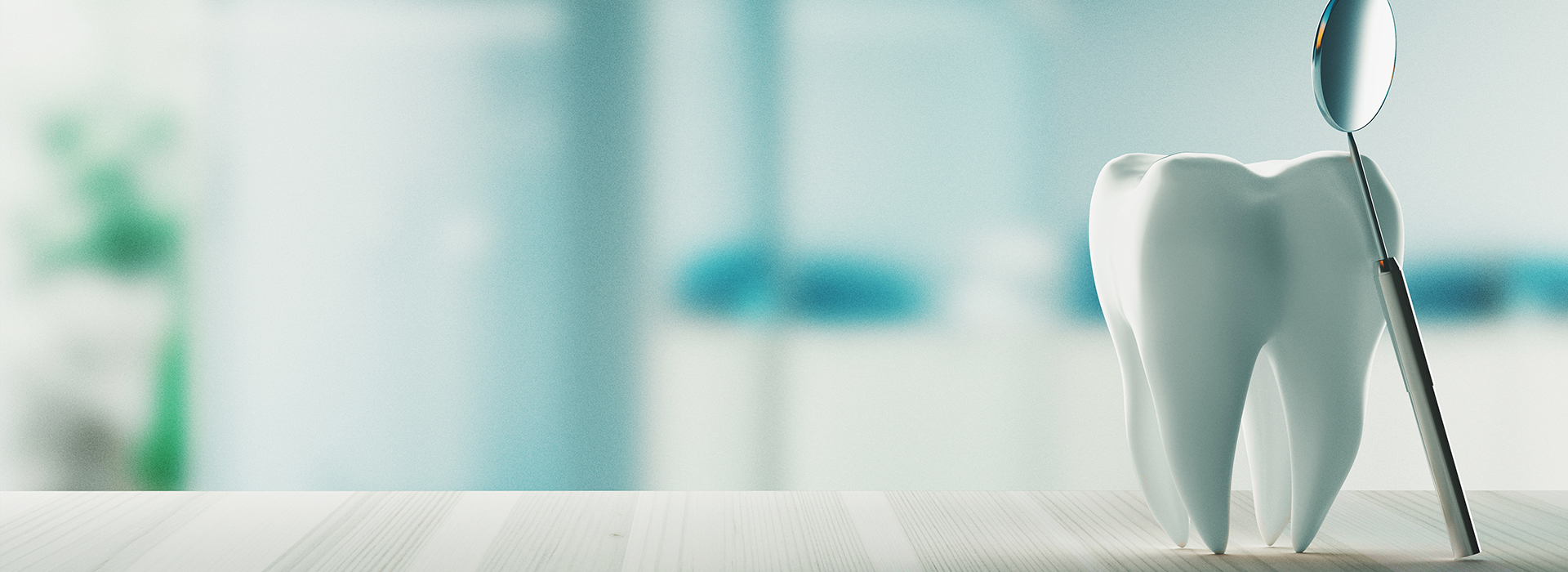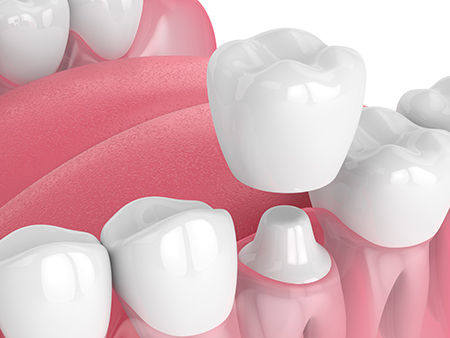
At Addison Dental Studio, we bring together modern materials and thoughtful treatment planning to restore teeth that are damaged, weakened, or cosmetically compromised. Our team stays current with advances in restorative dentistry so you receive care that balances function, longevity, and natural-looking aesthetics.
Tooth enamel is remarkably tough, yet teeth are still susceptible to decay, cracks, and the cumulative wear from habits like clenching and grinding. In many cases, a dental filling repairs the problem. When a tooth has lost substantial structure or has been weakened by a large filling, trauma, or root canal therapy, a more protective restoration is often the better long-term solution.
Ceramic crowns offer a metal-free option that combines strength and lifelike appearance. Advances in dental ceramics mean crowns can now be crafted to closely mimic the translucency and texture of natural teeth while withstanding the forces of chewing and everyday use.
We tailor every restoration to the individual — considering bite, smile goals, and overall oral health — and we prioritize patient comfort throughout the process. Our focus is to recommend the approach that preserves as much natural tooth structure as possible while delivering a durable, attractive outcome.
A crown is a full-coverage restoration that rebuilds the visible portion of a tooth. It is chosen when a simple filling would leave the tooth vulnerable to fracture, when the remaining tooth structure cannot reliably support chewing forces, or when the cosmetic concerns are significant and benefit from a complete reshaping.
Common scenarios that lead clinicians to recommend a crown include teeth with extensive decay, a fractured or broken tooth, a tooth that has received root canal treatment, or a restoration needed to cap an implant abutment. Crowns also serve as the protective covers for teeth that must support a dental bridge or other prosthetic appliance.
Beyond protection, a crown can restore proper chewing function and occlusion, prevent further deterioration, and improve the tooth’s shape and color. When correctly designed and placed, a crown returns confidence in both the appearance and performance of the tooth.
Deciding whether a crown is right for you begins with a comprehensive evaluation. We assess the extent of damage, the health of surrounding tissues, and how the tooth fits within the bite before recommending a crown or outlining alternative options.

Today’s ceramic crowns are engineered for both appearance and durability. Materials such as lithium disilicate and contemporary zirconia are designed to reflect light similarly to natural enamel, creating restorations that blend seamlessly with adjacent teeth.
Unlike older metal-based restorations, all-ceramic crowns are metal-free, eliminating visible metal margins at the gumline and reducing the risk of aesthetic compromise over time. These materials also offer biocompatibility that tends to be gentler on surrounding soft tissues.
Improved ceramic formulations have closed the gap between strength and translucency. Certain ceramics can be used where chewing forces are high, while others are optimized for front teeth where color match and translucency are paramount. This versatility allows us to select the material best suited to each individual tooth.
Additional advantages include resistance to staining and the ability to conserve more tooth structure in many cases. When properly selected and fabricated, ceramic crowns provide a long-lasting, natural-looking solution for restoring a confident smile.

Selecting the ideal ceramic starts with the tooth’s location and functional demands. Back teeth typically require materials with higher flexural strength to withstand biting forces, while front teeth benefit from materials that offer exceptional optical properties for a precise color match.
Lithium disilicate is frequently chosen for its combination of strength and esthetics — it can be both durable and highly translucent. Monolithic zirconia, particularly in newer high-translucency formulations, provides exceptional durability for posterior restorations and can be shaded to suit surrounding teeth.
Other options, such as leucite-reinforced porcelains, excel at reproducing fine surface texture and depth of color, making them a common choice for highly esthetic anterior crowns. The choice also depends on bite patterns, the amount of remaining tooth structure, and whether the crown must support or integrate with additional restorative work.
We explain the trade-offs of each material and how they align with your goals. The aim is to find a balance between longevity and lifelike appearance so your restoration functions well and complements your smile.

The process begins with a thorough exam and imaging as needed to evaluate the tooth and surrounding structures. We’ll discuss options and prepare a treatment plan that considers both function and appearance. When appropriate, digital impressions and CBCT imaging are used to plan restorations precisely.
To prepare the tooth, a conservative amount of enamel is removed to create room for the crown material. Impressions or digital scans capture the prepared tooth and neighboring teeth so the lab or in-office milling unit can create a restoration that fits comfortably and aligns with your bite.
Temporary crowns protect the tooth while the final ceramic restoration is fabricated. Once the permanent crown is ready, we carefully check fit, color, and occlusion, making adjustments as necessary before cementing it into place. We take extra care to achieve smooth margins and comfortable contacts with adjacent teeth.
After placement, we provide guidance on maintenance — including hygiene practices and what to expect during the initial adjustment period — so your crown settles comfortably and performs as intended for years to come.
At our practice we combine technical skill with open communication to deliver restorations that meet both clinical and aesthetic goals. We focus on conservative techniques, high-quality ceramic options, and attention to detail throughout the planning and placement process.
Addison Dental Studio emphasizes individualized care: each crown is selected and shaped to harmonize with your smile, gingival contour, and bite. Our treatment decisions are informed by diagnostic imaging, intraoral scanning, and a careful evaluation of how your teeth function together.
We also discuss long-term care and monitoring so you understand how to protect your investment. Regular exams and proper home care keep the surrounding tissues healthy and help crowns perform reliably over time.
If you’re considering a ceramic crown and want to learn which material and approach will best restore your tooth, contact us to speak with our team. We’re here to answer questions and outline the next steps toward a strong, natural-looking restoration.
While a dental filling is designed to replace a portion of a decayed or damaged tooth, a dental crown offers full coverage to restore the tooth’s entire outer surface. A well-fitting dental crown not only protects and strengthens the underlying tooth structure, but it also restores the tooth’s appearance and function.
The procedure for getting an all-ceramic crown is much like the procedure for getting any other type of crown. In all cases, the tooth needs to be prepared, an impression taken, and a permanent crown cemented into place. A single all-ceramic crown can typically be fabricated over the course of two visits. However, with CAD/CAM technology, a same-day crown can be fabricated from start to finish in a single visit. With the first approach, a temporary crown is typically worn until the second visit, when the permanent restoration is placed. As with every treatment plan, our office will explain your best options in care.
As the name implies, a temporary crown is only worn for a short time until the permanent crown is placed. A temporary crown is typically fabricated from durable tooth-colored dental acrylics. While designed to protect the underlying tooth between appointments, and until your new permanent crown gets placed, a temporary crown is also fabricated to look like a natural tooth and maintain the look of your smile.
While you should feel better having an attractive and functional tooth to restore your smile, your tooth may feel a little sensitive following treatment. This initial sensitivity will subside. We take great care to make sure your new restoration looks great, fits well, and your bite is perfect. However, we’re always happy to make any minor adjustments to ensure your comfort.
With some exceptions, teeth with root canal procedures are typically restored and protected from further damage with a full-coverage crown. Based on what’s best for your smile, our office will recommend the most appropriate restoration to maintain the health and longevity of your tooth following a root canal procedure.
A dental crown is a long-term restoration that, if properly cared for, can serve you well for many years to come. Once your new crown is placed, it requires the same brushing, flossing, and periodic checkups as your natural teeth. Avoid biting your fingernails and chewing on hard or sticky objects such as ice, pencils, or taffy, which can damage or loosen your crown. Remember, clenching and grinding your teeth puts excessive pressure on both natural teeth and dental restorations. Unless treated, this habit can compromise the longevity and integrity of your dental work, including crowns.
Although your new all-ceramic crown restores the tooth's strength, form, and function, you can still develop dental disease in the absence of proper care. To prevent gum disease and tooth decay, it’s essential to brush and floss as instructed and see our office for routine checkups, cleanings, and care.
How long a dental crown lasts depends on various factors, including your level of oral care, diet, and oral habits. While the standard answer is that dental crowns can last anywhere from 5 to 15 years, existing literature confirms that most dental crowns remain in place at 15 to 20 years.
At the office of Addison Dental Studio, we strive to provide the highest quality of care to address all your dental needs. Once we’ve had the opportunity to examine your smile, we can give you a clear picture of any dental issues that are present, along with a quote for how much treatment will be. The cost of dental crowns can vary a little, depending on the type of crown and its location. Our goals are to provide the highest quality of care and help patients begin treatment without additional financial stress or delay. We’re always happy to answer all your questions on dental insurance coverage, available financing, and payment plans.
Coverage for all-ceramic crowns depends on your dental insurance plan. Today, many dental plans provide some level of coverage for all-ceramic crowns. At the office of Addison Dental Studio, we work with patients to optimize their dental benefits and get the care they need to maintain healthy and beautiful smiles!
Ceramic crowns are full-coverage restorations made entirely from dental ceramics that restore a damaged or weakened tooth to a natural appearance and function. These restorations eliminate the need for metal substructures, allowing light to transmit in a way that closely resembles natural enamel. They are commonly used to protect teeth that are fractured, extensively decayed, or have undergone root canal therapy.
Modern ceramic formulations balance strength and translucency so crowns can withstand normal chewing while matching adjacent teeth. Treatment is individualized to preserve tooth structure and achieve both functional stability and aesthetic harmony. At Addison Dental Studio, our team evaluates each case to recommend the ceramic option that best meets a patient’s clinical and cosmetic goals.
A ceramic crown is recommended when a simple filling cannot reliably restore a tooth’s strength or shape. Typical indications include large decay, a fractured or broken tooth, a tooth with significant restorative work, or a tooth that has had root canal therapy. Crowns also cap implant abutments and serve as anchors for dental bridges when adjacent teeth require protection. When the remaining tooth structure is insufficient to withstand chewing forces, a crown provides full coverage support.
Deciding on a crown begins with a comprehensive clinical exam and imaging to assess the extent of damage and the health of surrounding tissues. We review treatment alternatives, such as onlays or bonded restorations, when preservation of tooth structure is feasible. The final recommendation balances long-term durability, oral function, and the patient’s cosmetic goals.
All-ceramic crowns offer superior aesthetics compared with metal or porcelain-fused-to-metal restorations because they lack a metal core and can reproduce the translucency of natural teeth. This metal-free design eliminates visible dark margins at the gumline that can occur with older restorations. Ceramics also tend to be more biocompatible with soft tissues.
Historically, metal-based restorations provided excellent strength, but advances in ceramic materials have narrowed the performance gap for many applications. High-strength ceramics such as contemporary zirconia can be used in areas of greater chewing force, while more translucent ceramics are preferred for front teeth. Choosing between options involves considering both functional demands and aesthetic priorities.
Common ceramic materials for crowns include lithium disilicate, monolithic zirconia, and leucite-reinforced porcelain, each offering distinct mechanical and optical properties. Lithium disilicate is valued for its balance of strength and translucency, making it a versatile choice for many teeth. Monolithic zirconia is exceptionally strong and is often used where durability under heavy occlusal loads is essential.
Leucite-reinforced porcelains and layered ceramic systems excel at reproducing fine surface texture and color depth for highly esthetic anterior restorations. Material selection depends on tooth location, bite forces, the amount of remaining tooth, and the desired shade match. Your clinician will explain the trade-offs so you understand why a particular ceramic is recommended.
Crown treatment starts with a thorough examination, diagnostic imaging as needed, and a discussion of goals and expectations. To prepare the tooth, a conservative amount of enamel is removed to create space for the restoration while preserving as much natural structure as possible. Digital scans or impressions capture the prepared tooth and surrounding dentition for accurate fabrication. A temporary crown protects the tooth while the final restoration is produced.
When the permanent crown is ready, the dentist carefully evaluates fit, contacts, color, and occlusion, making any necessary adjustments before cementation. The crown is then bonded or cemented into place using materials appropriate to the chosen ceramic and clinical situation. Postoperative guidance covers home care and what to expect during the initial settling period.
Maintaining a ceramic crown begins with excellent oral hygiene: brush twice daily with a soft-bristled brush and floss around the restoration to prevent plaque accumulation and decay at the margins. Avoiding hard or excessively sticky foods and habits such as ice chewing can reduce the risk of chipping. If you clench or grind your teeth, addressing that habit is important to protect restorations from excessive wear. Regular dental exams allow the dentist to monitor the crown and surrounding tissues for early signs of problems.
Professional cleanings and periodic evaluations help preserve both the crown and adjacent teeth and gums. If bruxism is identified, a custom night guard can be recommended to distribute forces and protect restorations. Promptly reporting looseness, persistent sensitivity, or changes in bite helps ensure timely care.
Yes, ceramic crowns can be used on both front (anterior) and back (posterior) teeth, but material choice varies with functional and esthetic demands. Front teeth typically require ceramics with excellent translucency and color-matching characteristics to blend seamlessly with natural enamel. Back teeth often need materials with higher flexural strength to withstand stronger biting forces.
Contemporary high-translucency zirconia and lithium disilicate offer options that bridge aesthetic and strength requirements for many posterior cases. The dentist will consider bite patterns, opposing dentition, and the amount of remaining tooth when recommending a material. This individualized approach ensures the restoration performs well while meeting cosmetic expectations.
Ceramic materials used for crowns are generally well tolerated and considered biocompatible with surrounding oral tissues. Because they are metal-free, ceramic crowns reduce the likelihood of metal-related allergies and eliminate dark margins at the gumline. A precise fit and smooth margins help maintain healthy gingival tissues.
Properly fabricated and seated crowns minimize bacterial ingress at the margin and reduce the risk of secondary decay. Routine monitoring and good oral hygiene further lower the chance of complications. If any unusual symptoms or tissue changes occur, prompt evaluation ensures early intervention.
Signs that a crown may need repair or replacement include persistent pain, a loose or wobbly restoration, visible chipping or a fracture, and changes in your bite. Sensitivity to hot, cold, or biting pressure can indicate a problem such as a loose crown or decay beneath the restoration. Visible gaps at the margin, discoloration near the gumline, or recurrent discomfort should prompt an examination.
Gum inflammation around a crown or a new foul taste or odor may signal decay or a failing seal and should be evaluated promptly. Depending on the issue, solutions range from adjustment and rebonding to replacement with a new restoration. Timely professional care helps protect adjacent teeth and maintain oral health.
Selecting the right ceramic option begins with a comprehensive clinical assessment that includes tooth position, occlusal forces, amount of remaining tooth structure, and esthetic goals. Diagnostic tools such as digital imaging and intraoral scanning provide detailed information to plan conservatively and accurately. The dentist assesses how the proposed restoration will interact with adjacent teeth and the opposing bite to prevent future complications. This diagnostic process informs a predictable treatment pathway.
At Addison Dental Studio, we discuss the advantages and limitations of recommended materials so patients can make informed decisions about their care. Treatment planning also accounts for long-term maintenance and the desired cosmetic outcome to ensure satisfaction with the final result. Collaborative decision-making and precise fabrication help achieve restorations that look natural and perform reliably.
Quick Links
Contact Us